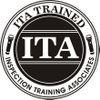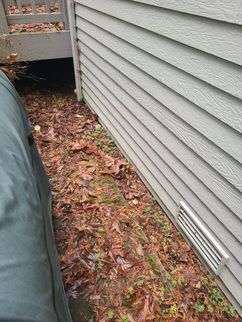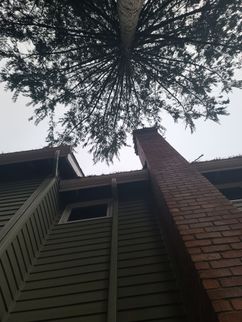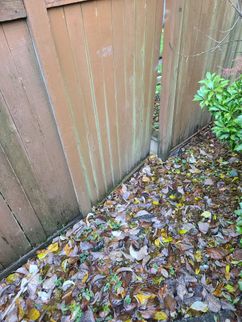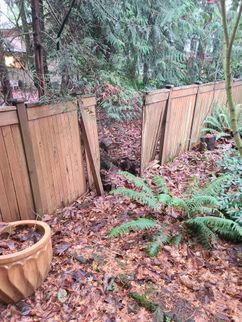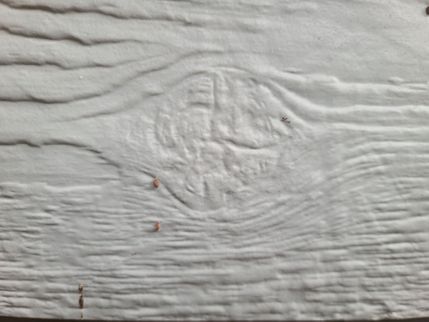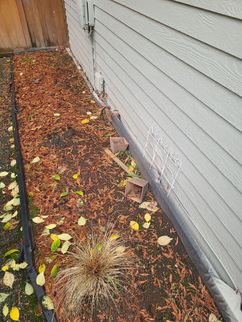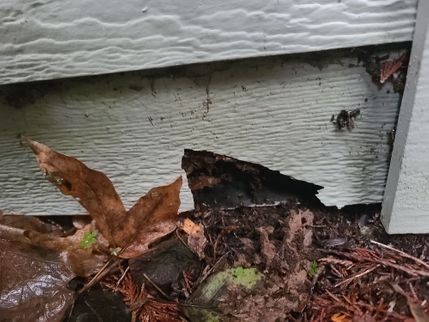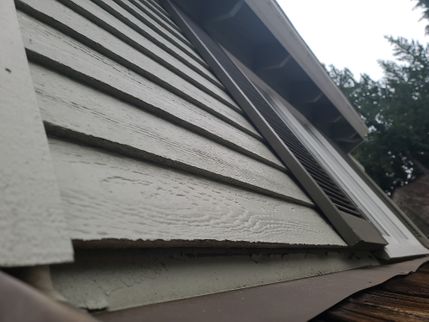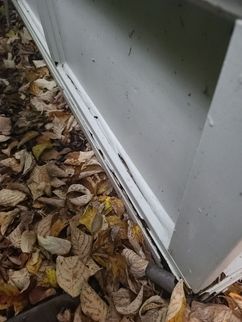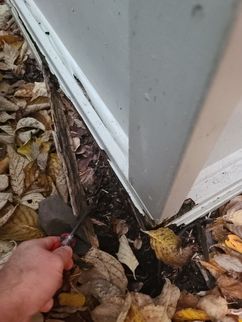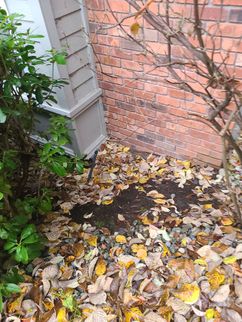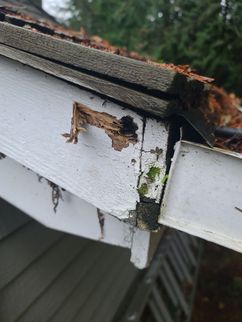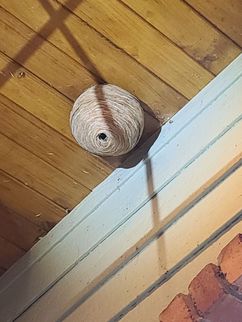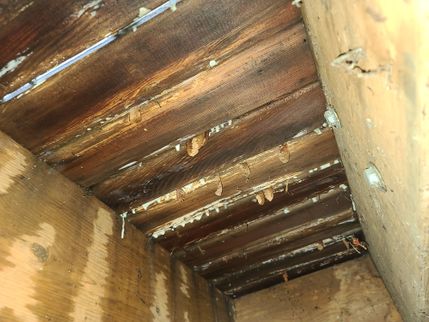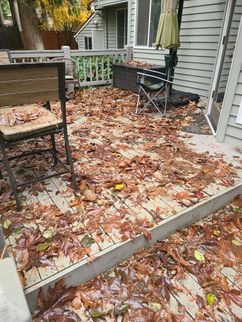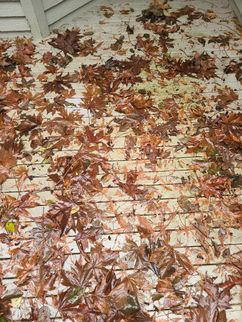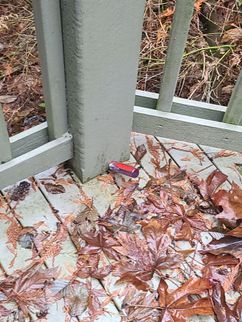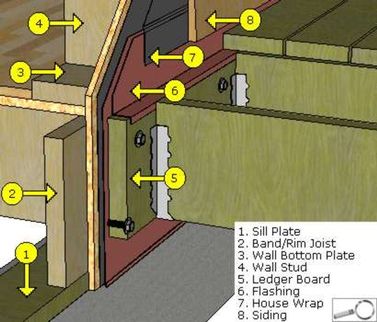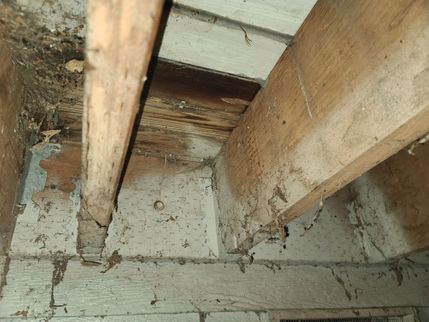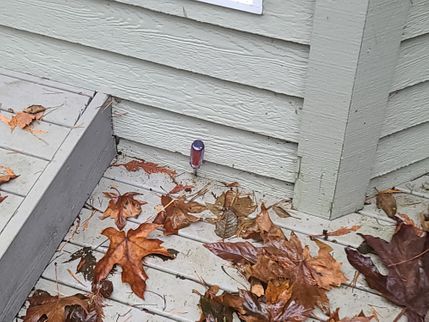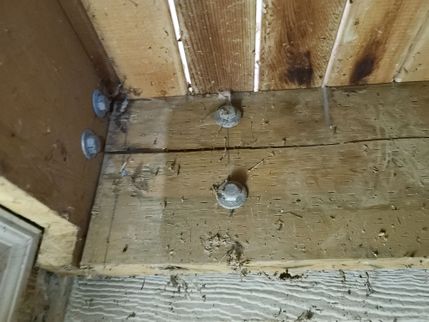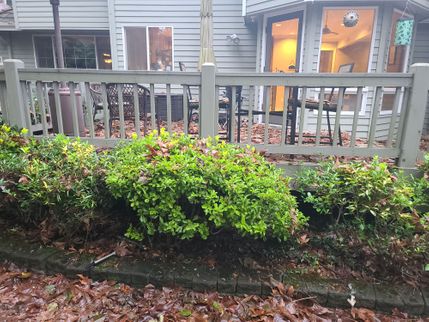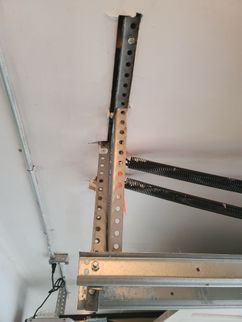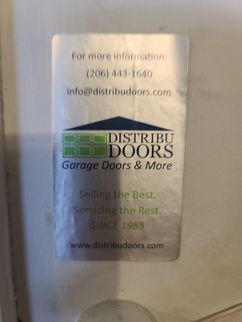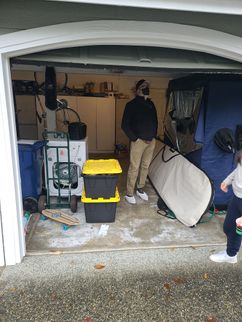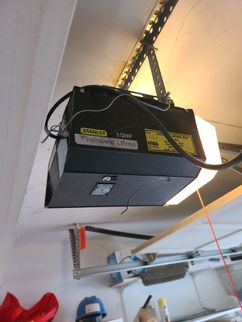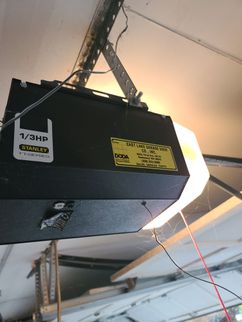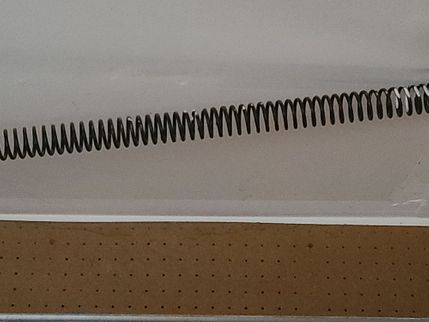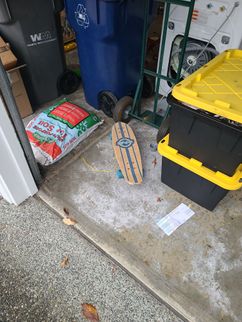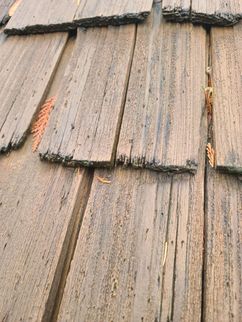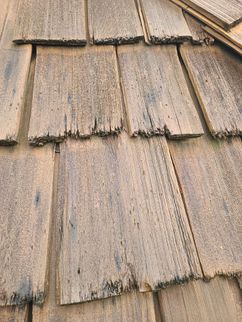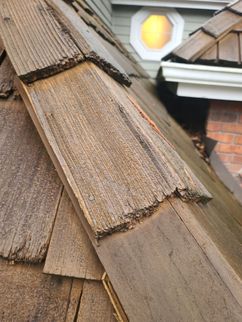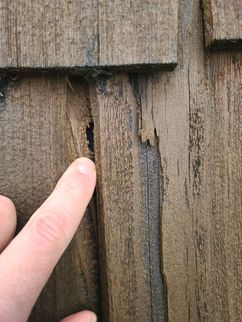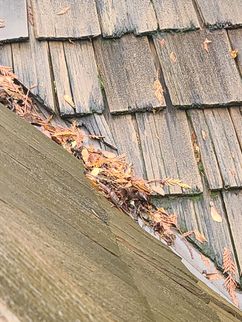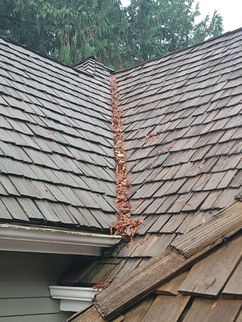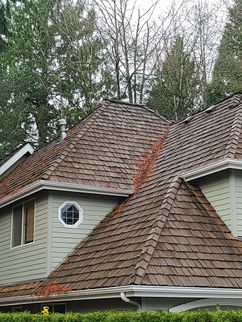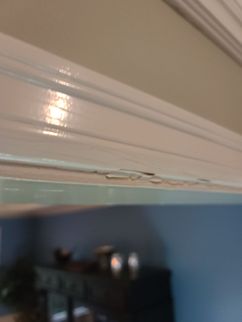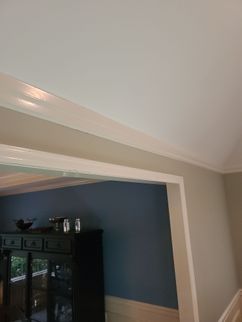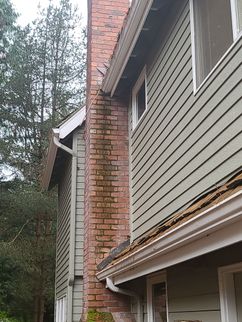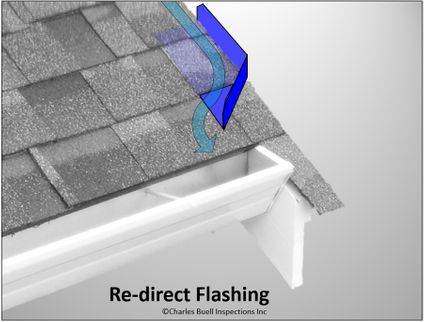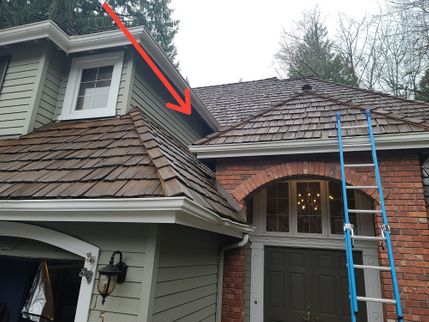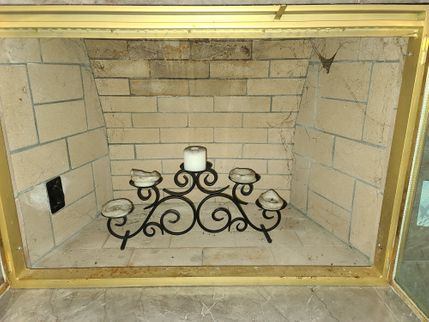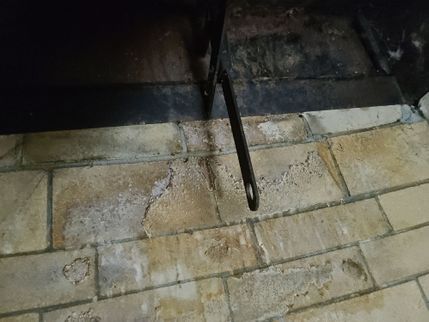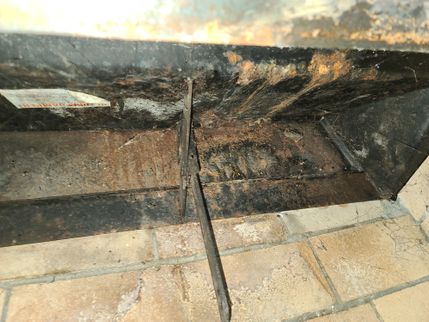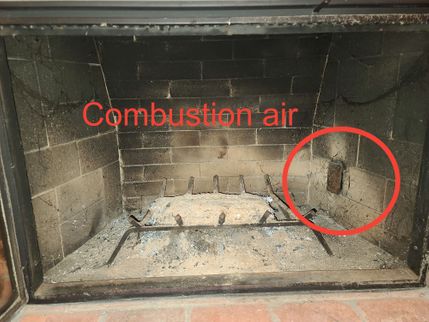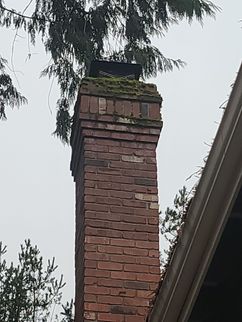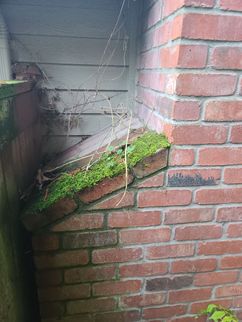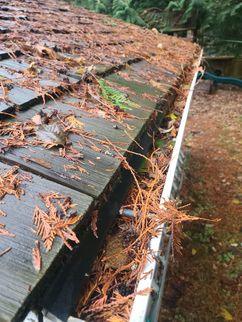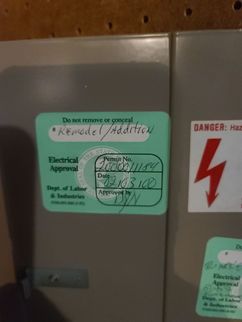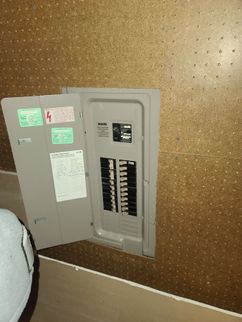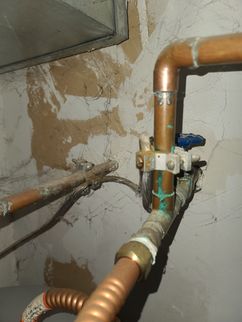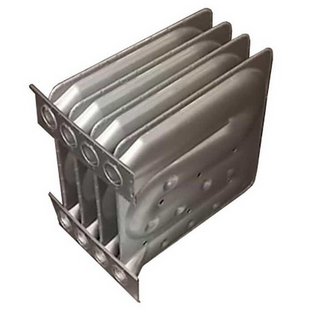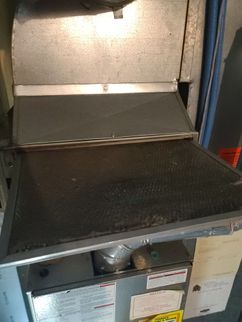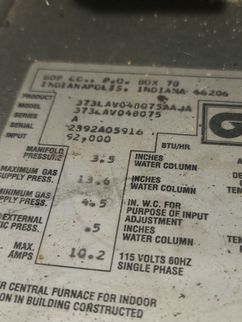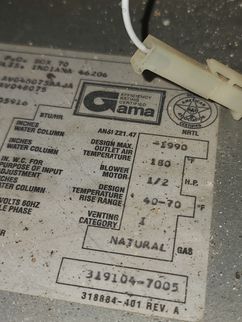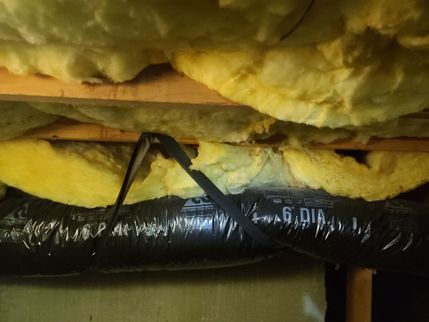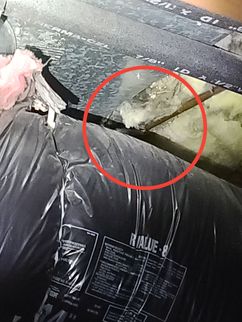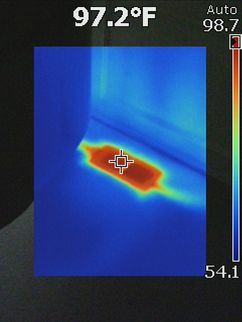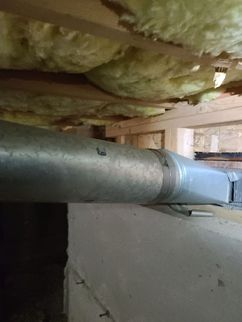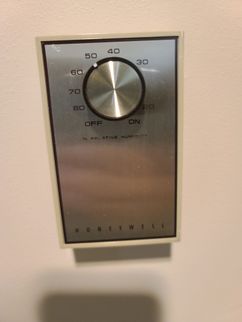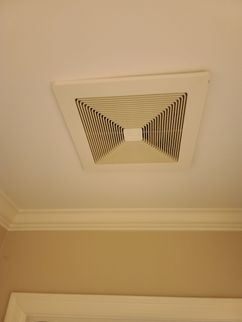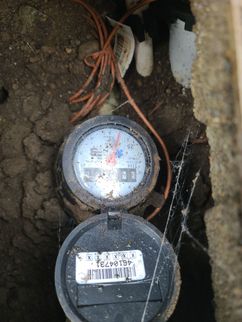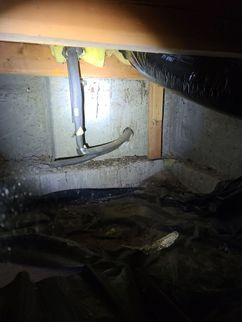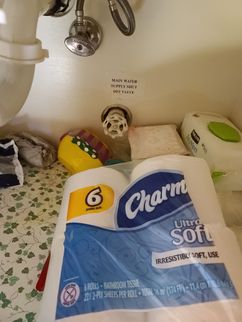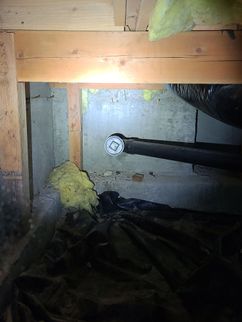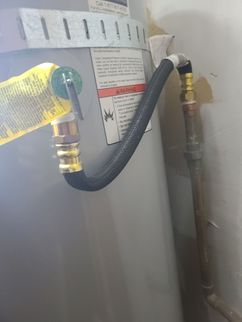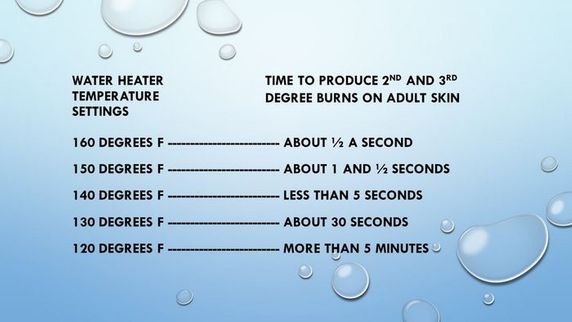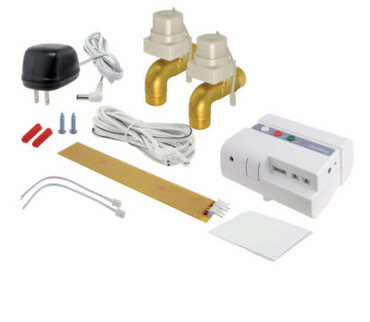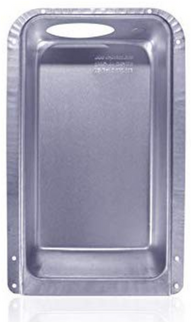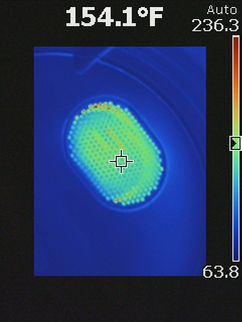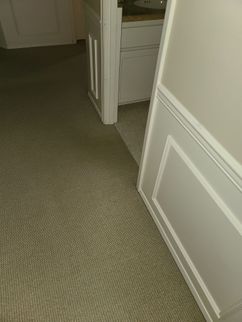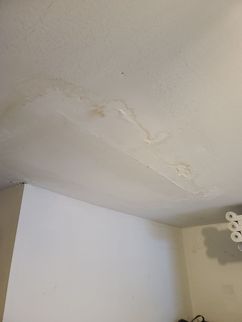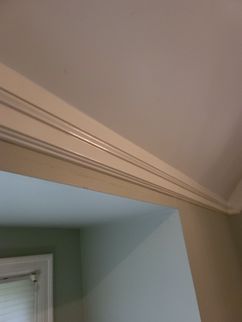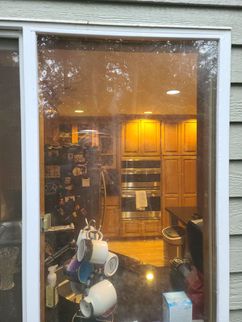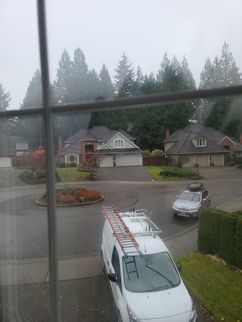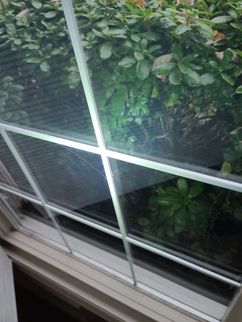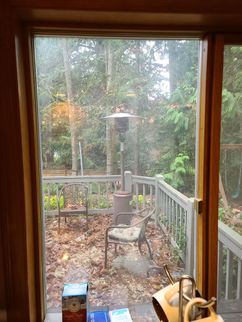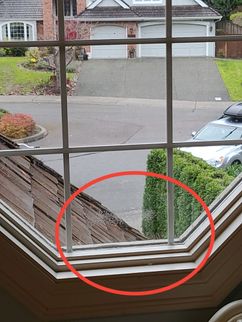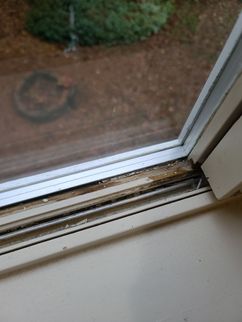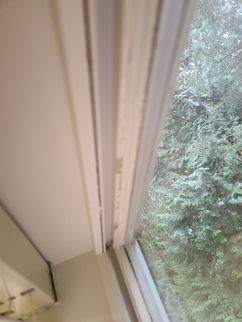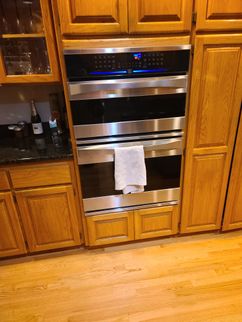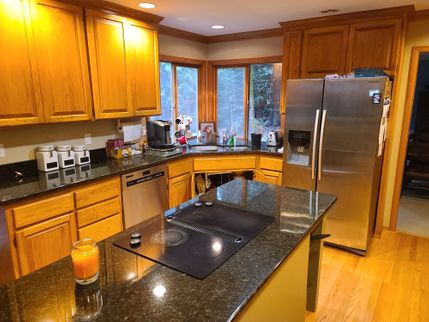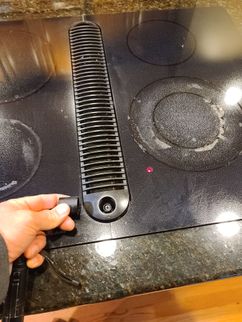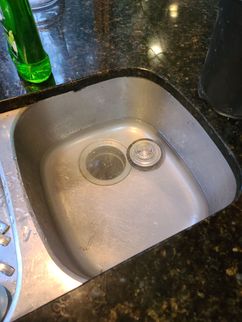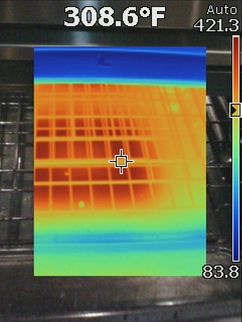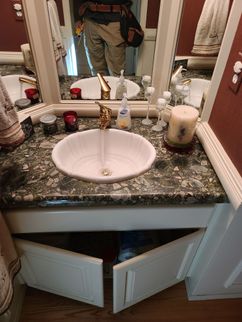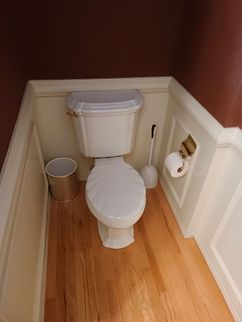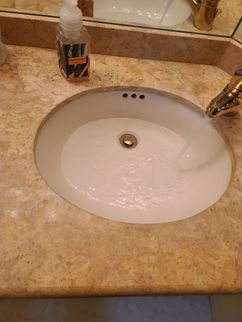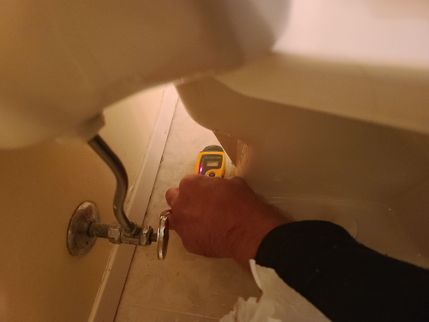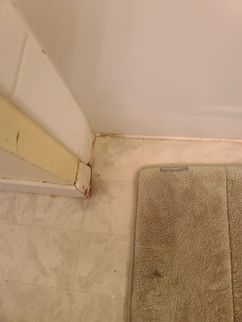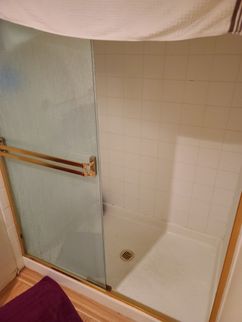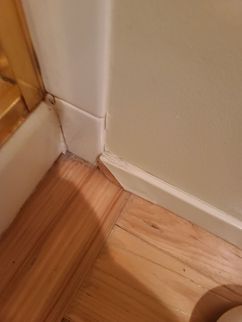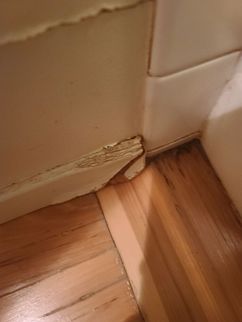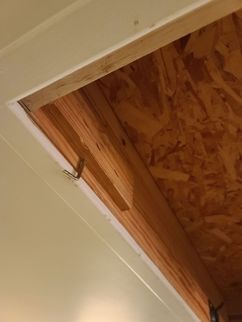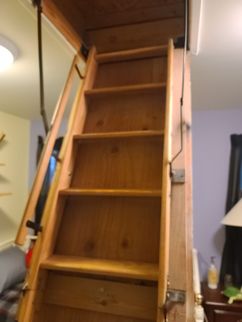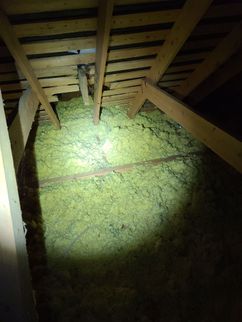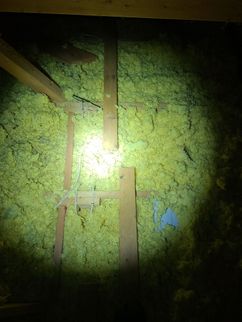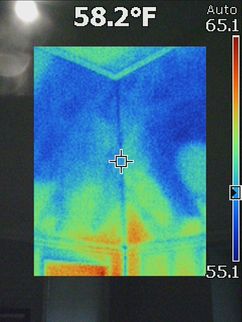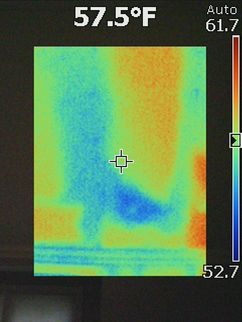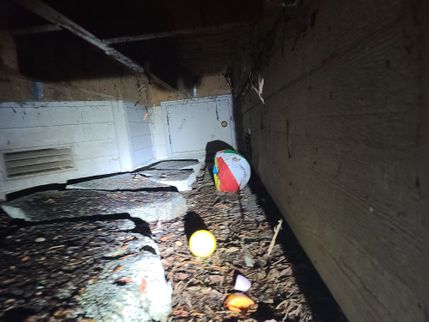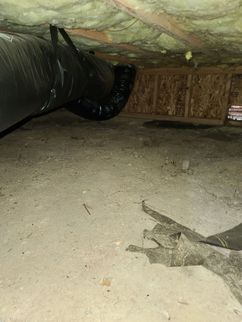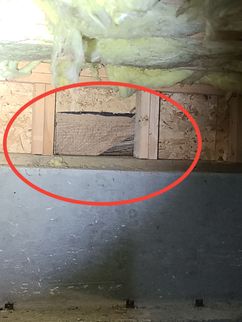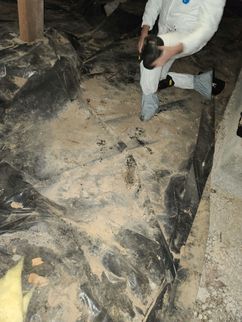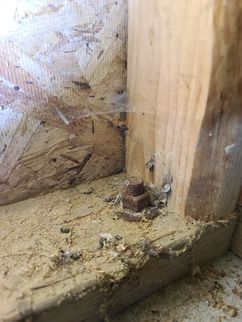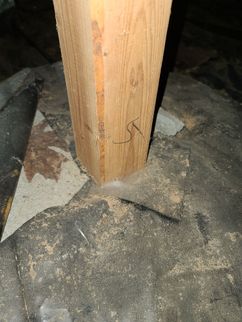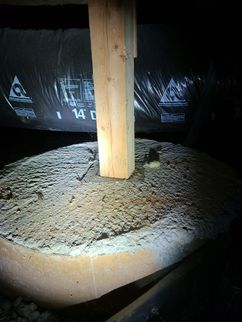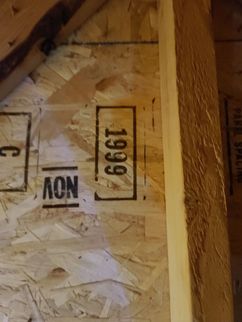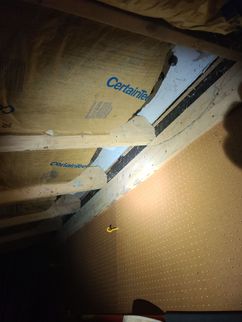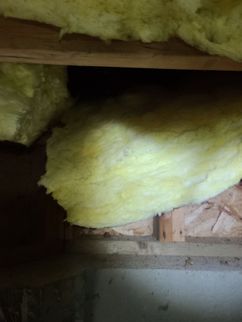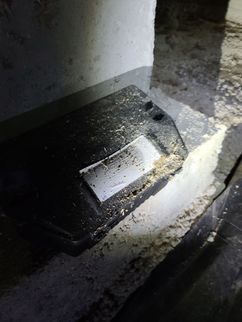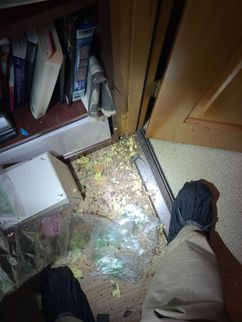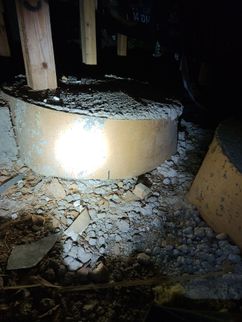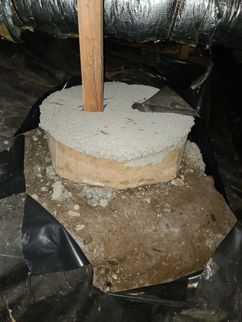The Scope and Purpose of a Home Inspection
Purchasing property involves risk
The purpose of a home inspection is to help reduce the risk associated with the purchase of a structure by providing a professional opinion about the overall condition of the structure. A home inspection is a limited visual inspection and it cannot eliminate this risk. Some homes present more risks than others. We cannot control this, but we try to help educate you about what we don’t know during the inspection process. This is more difficult to convey in a report and one of many reasons why we recommend that you attend the inspection.
A home inspection is not an insurance policy
This report does not substitute for or serve as a warranty or guarantee of any kind. Home warranties can be purchased separately from insuring firms that provide this service.
A home inspection is visual and not destructive
The descriptions and observations in this report are based on a visual inspection of the structure. We inspect the aspects of the structure that can be viewed without dismantling, damaging or disfiguring the structure and without moving furniture and interior furnishings. Areas that are concealed, hidden or inaccessible to view are not covered by this inspection. Some systems cannot be tested during this inspection as testing risks damaging the building. For example, overflow drains on bathtubs are generally not tested because if they were found to be leaking they could damage the finishes below. Our procedures involve non-invasive investigation and non-destructive testing which will limit the scope of the inspection.
This is not an inspection for code compliance
This inspection and report are not intended for city / local code compliance. During the construction process structures are inspected for code compliance by municipal inspectors. Framing is open at this time and conditions can be fully viewed. Framing is not open during inspections of finished homes, and this limits the inspection. All houses fall out of code compliance shortly after they are built, as the codes continually change. National codes are augmented at least every three years for all of the varying disciplines. Municipalities can choose to adopt and phase in sections of the codes on their own timetables. There are generally no requirements to bring older homes into compliance unless substantial renovation is being done.
This is just our opinion
Construction techniques and standards vary. There is no one way to build a house or install a system in a house. The observations in this report are the opinions of the home inspector. Other inspectors and contractors are likely to have some differing opinions. You are welcome to seek opinions from other professionals.
The scope of this inspection
This inspection will include the following systems: exterior, roof, structure, drainage, foundation, attic, interior, plumbing, electrical and heating. The evaluation will be based on limited observations that are primarily visual and non-invasive. This inspection and report are not intended to be technically exhaustive.
Your expectations
The overall goal of a home inspection is to help ensure that your expectations are appropriate with the house you are proposing to buy. To this end we assist with discovery by showing and documenting observations during the home inspection. This should not be mistaken for a technically exhaustive inspection designed to uncover every defect with a building. Such inspections are available but they are generally cost-prohibitive to most homebuyers.
Your participation is requested
Your presence is requested during this inspection. A written report will not substitute for all the possible information that can be conveyed verbally by a shared visual observation of the conditions of the property.
How to Read This Report
Getting the Information to You
This report is designed to deliver important and technical information in a way that is easy for anyone to access and understand. If you are in a hurry, you can take a quick look at our "Summary Page” and quickly get critical information for important decision making. However, we strongly recommend that you take the time to read the full Report, which includes digital photographs, captions, diagrams, descriptions, videos and hot links to additional information.
The best way to get the layers of information that are presented in this report is to read your report online (the HTML version), which will allow you to expand your learning about your house. You will notice some words or series of words highlighted in blue and underlined – clicking on these will provide you with a link to additional information. The HTML version of this report also contains streaming videos. Short video clips often contain important information and critical context and sounds that can be difficult to capture in words and still pictures.
For the most reliable viewing experience, I recommend viewing the report on as large a screen as practical, as much detail can be lost on small devices like smart phones. For similar reasons, reports should only be printed in color to retain as much detail as possible and minimize misinterpretation of photographs.
This report can also be printed on paper or to a PDF document.
Chapters and Sections
This report is divided into chapters that parcel the home into logical inspection components. Each chapter is broken into sections that relate to a specific system or component of the home. You can navigate between chapters with the click of a button on the left side margin.
Most sections will contain some descriptive information done in black font. Observation narrative, done in colored boxes, will be included if a system or component is found to be significantly deficient in some way or if we wish to provide helpful additional information about the system or the scope of our inspection. If a system or component of the home was deemed to be in satisfactory or serviceable condition, there may be no narrative observation comments in that section and it may simply say “tested,” or “inspected.”
Observation Labels
All narrative observations are colored, numbered and labeled to help you find, refer to, and understand the severity of the observation. Observation colors and labels used in this report are:
- Major Concern:Repair items that may cost significant money to correct now or in the near future, or items that require immediate attention to prevent additional damage or eliminate safety hazards.
- Repair:Repair and maintenance items noted during inspection. Please note that some repair items can be expensive to correct such as re-finishing hardwood floors, but are considered simply repair items due to their cosmetic nature.
- Recommended Maintenance:These are repair items that should be considered "routine home ownership items," such as servicing the furnace, cleaning the gutters or changing the air filters in the furnace.
- Improve or Upgrade:Observations that are not necessarily defects, but which could be improved for safety, efficiency, or reliability reasons. These are often items which reflect changes in building codes or standards.
- Monitor:Items that should be watched to see if correction may be needed in the future.
- Due Diligence:Observation such as a buried oil tank that may require further investigation to determine the severity and / or urgency of repair.
- Future Project:A repair that may be deferred for some time but should be on the radar for repair or replacement in the near future.
- Efficiency:Denotes observations that are needed to make the home more energy efficient as well as to bring the home up to modern insulation standards. This category typically includes windows and insulation. Other items, such as lighting and appliances, are not inspected for their energy status.
- Recommended Disclosure Items:These are observations for which we recommend that sellers disclose more information to buyers so that buyers can better understand recent servicing, repairs or maintenance or even construction history or building and site design.
- Inspection Notes and Limitations:Refers to aside information and /or any comments elaborating on descriptions of systems in the home or limitations to the home inspection.
- Description:Detailed description of various aspects of the property noted during the inspection.
Pest Inspection
All items with the bug logo () are part of a structural pest inspection. If your inspector included a structural pest inspection as a part of the scope of your home inspection, you can distinguish pest inspection items by this logo. You can also go to the pest inspection summary page to see a summary of the items that are part of a pest inspection.
Summary Page
The Summary Page is designed as a bulleted overview of all the observations noted during inspection. This helpful overview is not a substitution for reading the entire inspection report. The entire report must be read to get a complete understanding of this inspection report as the Summary Page does not include photographs or photo captions.
Moisture Meter Testing
Where moisture meter testing is indicated in this report a Protimiter Survey Master Dual Function was used.
Summary
Major Concerns
- ED1-1 Exteriors and Decks:
Louisiana Pacific OSB siding has been used to side much of this house. This siding, commonly referred to as "LP siding" is installation sensitive and is vulnerable to premature failure where poorly installed and / or exposed to the weather. Based on the age of the home it is likely LP's Inner Seal siding. This OSB siding product has been the subject of a class action law suit regarding premature failure. The suit has been settled and no more settlement funds are available. Visual inspection today showed that the siding is failing where exposed to the weather. I recommend additional inspection by a qualified contractor. Repair / update the siding as recommended and be sure to fully evaluate the scope of this project such as the potential for window updates as well as replacement of weather barriers, trim, flashings, caulk and paint. Examples of observations noted during inspection include
- LP knot - verifies this is LP siding
- I would expect damage to areas in soil contact and near the ground
- I would expect the need for replacement where roof splash-up can damage the siding.
- Water damage to base of Siding and door here
- Significant damage to LP - south side - bump-out
- Expect damage to the siding where it is near or in contact with hardscape.
- Check bottom edge such as these for delamination
- ED1-2 Exteriors and Decks:
Localized rot repairs are needed to the exterior trim - see the base of the bump-out at the SW corner. Hire a licensed general contractor to further evaluate and repair the exterior siding system. Repair and replace all damaged and decaying exterior wood as needed. Please note that this condition can indicate additional concealed damage that is not visible to inspection. Also note that proper repair here may require repair / adjustment of the irrigation system as well as repair of incorrect grade and site work here.
- ED1-5 Exteriors and Decks:
Overall, this is an old deck. Numerous repairs are needed to the decking systems on this house to ensure safe and reliable performance. Some of these repairs can be made, while other issues simply are the way they are until the deck is rebuilt. I recommend additional inspection and repair of these decks by a qualified general contractor. Options include a full re-building or implementing repairs as are feasible to prolong the useful life of the deck. Examples of observations and defects noted during inspection are included as a series of repair items in this section.
- RCG2-1 Roof, Chimney and Gutters:
This wood shake roof is in the last phase of its useful service life. It is common to do roof tune ups with older shake roofs to prolong their useful service life. Tune ups are typically done until roughly 10% of the shakes are in failure. Once this point is reached, it is usually more cost effective to replace the roof. I recommend additional inspection of this roof by a licensed roofing contractor to further evaluate and repair or replace as recommended to ensure reliable performance. If this roof is kept in service, budget for a complete replacement in the near term. Examples of observations noted during inspection include:
- Shakes are old, splitting and rotting at end grain.
- Hip shakes are deteriorating
- Note how the paper interlayment is visible in multiple places.
- Organic debris build-up in valleys can inhibit proper drainage off the roof.
- Signs of prior leaks were noted inside between the living room and the dining room - these tested dry at the time of inspection
- HCFV-1 Heating, Cooling, Fireplaces and Ventilation:
This gas forced air furnace is old and is past its useful design life. The average service life of natural gas and propane forced air furnaces is 15-20 years - this unit is from 1992. Funds should be reserved to replace this furnace at any time. The risk of running a gas forced air furnace past its useful design life is that the furnace could continue to operate with a cracked heat exchanger. This is a safety hazard that can allow products of combustion enter the supply air to the home. Furnace heat exchangers are not visible to inspection without expensive diagnostics, so is it difficult to know when the furnace could be posing a safety hazard to the occupants. Older furnaces like this are also less reliable and subject to the need for constant repairs. It can be more cost-effective to simply replace these furnaces on a 20 years schedule. Examples of specific observations noted and testing procedures done during inspection include:
- The air filter is super dirty and the pre-filter is damaged.
- The whole system is very dirty
- No recent service records were found.
I recommend having this furnace serviced and the heat exchanger inspected by a qualified heating contractor. Updating this furnace is recommended. If this furnace is kept in service, budget to update at any time and install carbon monoxide alarms in the home. Standards for CO alarms are 1 / floor and 1 outside all sleeping areas.
- I-2 Interior:
The hardwood floors were noted to be cupping chronically in the master bathroom and closet. Cupping is when the wood flooring presents with a cupped or scalloped appearance. This can be a sign of excessive moisture inside the house, inconsistent conditioning of inside air or moisture control problems in the basement or crawl space. It can also be related to how the flooring was installed or inconsistent heating of the home. Please see crawl space and basement chapters of this report for any evidence of moisture conditions below these floors. As this is a localized problem it presents as a cosmetic defect at this time. Consult with a wood flooring specialist about options for repair or replacement.
- A-4 Attic:
The attic insulation is damaged and incomplete in places - see especially above the living room - see attached thermal images. For improved energy efficiency and to reduce heat loss, I recommend repairing incomplete thermal barriers and re-insulate to modern standard or to best possible levels. Be sure to seal up all air leakage points during repairs and prior to insulating to modern standard be sure all projects such as wiring and bath fans have been completed.
Repairs
- G-1 Grounds:
Eliminate wood /soil contact to reduce the chances for rot and pest damage and repair any hidden rot as needed - see north side. Generally, a 6-inch clearance between soils and wood is recommended. This is often not realistic on older homes, but repairs should be made to get as much clearance as is possible and all contact with the soils should be eliminated.
- G-2 Grounds:
The grade of the yard is slopping toward the building - see southwest corner. Standards recommend a quarter inch / foot slope away from the building or better to prevent water draining toward the house. Over time, negative grading, as this is often called, can lead to moisture and even structural problems with the house. Have this repaired as feasible by a qualified contractor. Often, a swale is used to create a low point away from the house into which water can be diverted away from and around the building.
- G-5 Grounds:
Localized areas of rot and loose and damaged fencing was noted. This is characteristic of older fencing. Implement repairs to the fencing as needed until updating. The urgency of this project is subjective and depends how much the new occupant wants to have a fence and what they want it for.
- ED1-3 Exteriors and Decks:
Rot was noted in the barge rafter of the small storage shed on the south side. Repair as needed.
- ED1-4 Exteriors and Decks:
Bees / wasps nests were noted on the eaves around the house and require removal to ensure safety to occupants and to be sure they do not set up large nests that could damage the house.
- ED1-6 Exteriors and Decks:
The wood decking and railing system on this deck is getting old and localized wood decay was noted in the decking and railing system. Roughly 5-10% of the wood is rotting and requires replacement in the near term. Temporary repairs can be made by replacing the worst boards, re-setting loose fasteners and cleaning and re-staining the wood but this deck needs to be re-decked in the near term. Hire a qualified general contractor to further evaluate and repair / replace damaged decking.
- ED1-7 Exteriors and Decks:
The deck ledger board has been installed over the siding. This is not a recommended installation as this important structural board has less purchase into framing making the deck more vulnerable to collapse. This is also a more difficult installation to flash and can allow water to get trapped between the deck and the siding causing rot and a conducive pest condition. This can be difficult to correct at this point. Consult with a qualified general contractor about options for repair.
- ED1-8 Exteriors and Decks:
The ledger board at the addition is cracked. This could impact the performance of the ledger. Repair as recommended by a qualified general contractor.
- FSD-1 Fuel Storage and Distribution:
The gas meter pressure regulator is too close to the appliance vent. It must be at least 3 feet away. Consult with your gas provider for an approved repair. This typically involves using an extension on the breather tube.
- G2-1 Garage:
Multiple unprotected openings were found in the garage wall fire separation. This should be repaired to complete the fire separation. Standards recommend complete sheetrock walls and ceilings between the garage and all habitable space. Use type C or type X sheetrock as needed to complete large openings in the fire separation and seal up all small gaps in the walls with fire stop caulking or drywall mud as needed.
- G2-3 Garage:
The overhead garage doors do not reverse under resistance to closing - see the two older openers. Adjustment of the sensitivity is recommended for improved safety. An adjustment setting can often be found as a plastic screw on the opener - I recommend consulting with the owners' manual or looking up the manual on-line as needed.
- G2-4 Garage:
No safety wire / containment cabling was noted running inside the overhead garage door springs. This is a modern standard to prevent a broken spring from becoming a projectile. Install a wire inside these springs for improved safety.
- G2-5 Garage:
The garage slab has a staining pattern on it that could indicate seasonal moisture / dampness. This is usually not a major concern in a garage as this is outdoor space but could limit the uses of this space. High moisture content in a garage slab could make it difficult to store cardboard on the floor for example, or finish this space, or could even lead to condensation problems on the overhead door. You can use concrete sealers to better seal the concrete and slow water wicking through to the surface. It is common on garage slabs to prepare them with less vigorous water proofing techniques as they are outside the thermal envelope.
- RCG2-2 Roof, Chimney and Gutters:
Redirect flashings are needed to divert water around the masonry chimney at the north side - see how water has been running down the side of the chimney.
- RCG2-5 Roof, Chimney and Gutters:
Organic growth was noted on the masonry chimney. This can be bad for the chimney and trap water in the masonry and hasten deterioration of brick and mortar. Consult with a qualified mason about options for cleaning and sealing the chimney and repairing failing mortar or sealing any cracks as needed.
- RCG2-6 Roof, Chimney and Gutters:
A loose / missing brick was noted at the south masonry chimney - repair as needed.
- ES1-2 Electric Service:
The electric panel cover could not be removed and the wiring could not be inspected. I recommend removal of the peg board covering the dead front cover. Then, have the wiring inside the panel further evaluated and repaired if recommended by a licensed electrical contractor.
- EDFW1-1 Electric Distribution and Finish Wiring:
The installation of carbon monoxide alarms is recommended for all homes that have fuel burning appliances such as gas or oil furnaces, gas water heaters, gas ovens and cook-tops, gas fireplaces and wood stoves. Carbon monoxide is a colorless, odorless gas that can cause sickness, nausea and even death. For more information, consult the Consumer Product Safety Commission at 1-800-638-2772 (C.P.S.C.) Modern standards in many states now recommend one CO alarm outside of all bedrooms and at least 1 per floor of the house.
- HCFV-2 Heating, Cooling, Fireplaces and Ventilation:
The ductwork in the crawl space is leaky and should be sealed to improve indoor air quality and improve the efficiency and distribution of the heating system. Use duct mastic to seal all leaks and be sure all ducts are insulated to R-8 or better when passing through unconditioned spaces. One great tool for this is a duct blaster. This can be used to measure leakage and make repairs.
- HCFV-4 Heating, Cooling, Fireplaces and Ventilation:
The kitchen fan was noted to be ducting into the crawl space - see duct leaks. This could contribute to condensation and mold problems. Repair all fans to be ducting to the exterior of the house and insulate to R-8 or better.
- P-1 Plumbing:
The supply pipe insulation is incomplete in the crawl space. Be sure all supply lines in unheated spaces have been adequately insulated to protect from freezing conditions that could damage the pipes and to prevent heat loss.
- P-3 Plumbing:
The discharge tube for the water heater temperature and pressure relief valve is incorrectly installed. The drain should slope to drain to prevent water pooling inside the discharge tube - this has not been done and water collecting inside the discharge could corrode and disable this important safety feature. Ideally, the discharge tube for a relief valve:
- Terminates to an exterior location or above a drain, though this is not always possible
- Slopes to drain to prevent water pooling inside the discharge tube
- Is not made from pipe with an inside diameter less than 3/4 on an inch
- Terminates to a visible location that can be monitored for leaks and discharges
- Does not have a threaded termination point which would prevent accidental capping of this important discharge
- Does not terminate into a drain pan
I recommend having this relief valve discharge tube further investigated and repaired as recommended by a licensed plumber.
- I-1 Interior:
A hump in the floor was noted in the 2nd floor near the family bathroom. his may be in the carpet pad? have this further investigated and repaired as is feasible during other renovation work. I did not see signs of cracking or settlement.
- I-3 Interior:
Water stains were noted on the ceiling in the garage and also on some of the trim work in the living room. These stains were tested with a moisture meter during inspection and tested dry at the time of inspection. Inquire with the seller for any history of prior leakage to get a better sense if repairs may be needed to prevent another leak. Many water leaks are intermittent or related to specific weather conditions or occupant behavior; it is impossible for us to distinguish these conditions during a one-time inspection or to know if repairs could be needed to prevent future leaks. Repair damaged finishes and paint as needed for a proper cosmetic appearance and implement additional repairs as needed to prevent future leaks.
- I-4 Interior:
Several panes of glass were presenting with a cloudy appearance which could indicate a lost or failed seal. I recommend cleaning the glass. If cloudiness persists and cannot be cleaned, I recommend having the window glass further evaluated by a glass replacement specialist. Replace all glazing with lost seals as needed. A lost seal is a common term for when there is permanent cloudiness between the panes of glass or between the "insulated glass units," IGU's. This is a cosmetic defect that does not impact the short term performance of the window.
- I-5 Interior:
A cracked pane of glass was noted in the family bathroom. This requires glazing replacement to repair.
- I-6 Interior:
Localized paint failure was noted on some of the windows inside. Re-paint as needed.
- K-2 Kitchen:
The downdraft fan controls on the kitchen fan are working poorly. I was able to get the fan to come on, but it was difficult and the control is almost broken. This is an old electric cooktop. Updating is recommended and will likely be needed soon.
- K-3 Kitchen:
The dishwasher has likely not been run for a while. This can dry out the dishwasher seals and lead to leaks. Leaks were found during inspection indicating repairs or updates may be needed. Have this appliance serviced and repaired as needed.
- K-4 Kitchen:
The kitchen sink disposer was tested and not working (inoperative) during inspection. Have this further evaluated and repaired by a licensed plumber. Please note the appliance sounds to be bound up and water is not draining properly. I would consider simply removing this appliance and repairing the drain as needed.
- FB1-2 Family Bathroom:
A slow drain was noted at the bar sink indicating that the drain may be obstructed. Repair as needed so the drain keeps up with the fixture supply. This typically involves cleaning out the trap.
- FB1-3 Family Bathroom:
High moisture meter readings were taken around the family bathroom toilet, indicating there is likely leakage and possibly concealed water damage. I also noted water stains around the toilet. It is difficult to determine the extent of the needed repair at this time. Repairs can be simple or more complex depending on the moisture source and the condition of materials below the toilet. Further investigation is required to determine an accurate scope of repair. Hire a licensed plumbing contractor to further evaluate and repair the toilet and the finish floor and sub-floor as needed.
- FB1-5 Family Bathroom:
The sheet goods flooring in the family bathroom is stained around the toilet indicating prior leaks. This was tested and was dry at the time of inspection. This will require replacement of this finish floor to repair and this could conceal hidden water damage. Hire a qualified contractor to repair.
- MB1-2 Main Bathroom:
The master bathroom toilet was fussy to operate. The handle had to be held down for some time to get the unit to flush properly. Repair, adjust or replace the toilet as needed for reliable performance.
- MB1-3 Main Bathroom:
Water damaged finishes were noted around the shower in the master bath. This is often caused by occupant behavior. Keep the door closed and well-sealed during showering. Make efforts to keep this area dry and make cosmetic repairs as needed.
- A-1 Attic:
The attic stair pulldown was noted to be old and unreliable - see missing nuts and loose screws and how the ladder seems to need a lock to stay closed. This unit should be further evaluated by a qualified contractor and repaired or replaced for safety reasons.
- CS3-1 Crawl Space:
The crawl space access door has fallen off its hinges. Repair as needed so the door opens and closes properly.
- CS3-2 Crawl Space:
The plastic vapor barrier in the crawl space is incomplete under the addition. Use 6 mil black plastic to cover all exposed earth. This helps to reduce humidity and eliminate conducive pest conditions in the crawl space. Adjust the current vapor barrier or add more plastic as needed.
- CS3-3 Crawl Space:
Crawl space vents are currently blocked in places - see southeast side. Implement repairs as needed to ensure vents are unobstructed. Use 1/4 inch wire mesh screen to seal as needed. Avoid multiple layers of screen and louvered vents as these restrict air flow. If needed, use cardboard baffles to keep sub-floor insulation away from the vents.
- RPWDO-1 Rodents, Pests and Wood Destroying Organisms:
Moderate rodent contamination was noted in the crawl space below the house and in the attic above the house. Hire a rodent control specialist or crawl space clean-up company to eliminate and seal all openings and set and monitor traps. Once all rodents have been sealed out all contaminated insulation and construction materials should be removed and replaced. On-going baiting and trapping as well as control of vegetation and elimination of food sources on the exterior of the home are often needed to prevent rodent problems / infestations. Keeping all trees pruned 6 feet off the house is recommended.
- RPWDO-2 Rodents, Pests and Wood Destroying Organisms:
Wood and cellulose debris was noted in the crawl space. This can encourage wood destroying organisms. Removal of all cellulose debris from the crawl space is recommended to eliminate conditions conducive to wood destroying organisms. This should include all wood as well as the old cardboard form material around the footings.
Recommended Maintenance Items
- G-3 Grounds:
All trees, branches and vegetation should be pruned at least six feet away from the building to eliminate a condition conducive to wood destroying organisms and a path for rodent entry - see all around the house.
- RCG2-4 Roof, Chimney and Gutters:
The NFPA (National Fire Protection Association) recommends an annual inspection of all chimneys, fireplaces, solid fuel-burning appliances, and vents. They also recommend an NFPA 211 Standard, Level II inspection upon sale or transfer of the property. A Level II inspection includes, not only cleaning the interior of the chimney pipe, but also the use of specialized tools and testing procedures such as video cameras, etc. to thoroughly evaluate the serviceability of the entire flue lining and fireplace/chimney system. Level II inspections are not always needed, especially for short simple flues that can be inspected visually after a cleaning. If a chimney cleaning has not been performed over the past 12 months, such an inspection is recommended before home changes ownership---for fire safety reasons. Implement any repairs as recommended.
- RCG2-7 Roof, Chimney and Gutters:
The gutters are clogged with organic debris and require cleaning to ensure proper control of roof runoff. Clean the gutters and ensure they are unobstructed, leak free and properly sloped to drain. This is routine house maintenance; I would expect the need to clean gutters and downspouts regularly.
- P-5 Plumbing:
Testing of the plumbing system today, the water tested as too hot - 129 degrees F. This is a scald hazard. To prevent scalding, standards recommend indoor hot water temperatures do not exceed 120 degrees. There is some evidence that hot water temperatures should be greater than 130 degrees to prevent Legionaries' disease from developing in the water heater. If this is a concern, you can heat the water in the tank to 140 degrees F and have a tempering valve installed at the hot water tank. Have this further evaluated and repaired by a licensed plumber or simply turn down the temperature as desired to eliminate a scald hazard. Please note that during inspection it is difficult to accurately test the water temperature as it can vary between fixtures. Testing is done in multiple locations during inspection and a median temperature is taken.
Improve Or Upgrades
- FSD-2 Fuel Storage and Distribution:
Consider improving the safety of the gas meter connection with a Northridge Valve. These are seismic protection that can automatically shut off the gas in the event of an earthquake.
- EDFW1-2 Electric Distribution and Finish Wiring:
There appear to be some of the original smoke alarms. These are getting old. Fire marshals recommended updating smoke alarms every 10 years to ensure reliable performance. Updating is recommended.
- LAP-1 Laundry and Additional Plumbing:
A moisture alarm with water shut-off features is recommended under the washing machine to protect against accidental leaks in the supply hoses. Pans can be effective when there is a drain, but even these will not protect against a burst supply connector. A moisture alarm with automatic shut-off will. Watts is a brand I have seen installed: Link.
- SB-1 Structure and Basement:
The hardware used for seismic protection here is older. As an example, the washers used today for foundation bolts are 3-inch square washers. It is common for older houses to be done to lesser seismic protection standards. Some older houses have no seismic protection at all. Starting around the 1970's seismic protection starting being required and standards have improved over the years. Consult with a qualified general contractor about options for improving this protection as desired.
Monitors
- RCG2-3 Roof, Chimney and Gutters:
During inspection of the roof I noted a vulnerable detail - see above the entry. These are areas that are not ideal for reliable roof drainage and may require regular maintenance. Organic debris may accumulate in these areas or snow build up during the winter months resulting in the potential for leaks. Often times architectural design and aesthetics trump practicality and functionality during the design phase of construction. Sometimes, changes to the roof line during renovation create some unique challenges. No red flags were noted at these areas however they may become problematic if they are not monitored. Examples and locations of areas that should be monitored and maintained include:
- CS3-5 Crawl Space:
The crawl space was dry at the time of inspection but I did note muddy soils on the plastic vapor barrier - see the low point by the entry. This could indicate seasonal moisture issues as they look like soils that have been wet in the past. This is difficult to gauge in new construction. I recommend inspecting this space for water during the rainy season to see how this new building performs. Mild dampness in the wet weather is pretty normal but there should be no significant standing water or pooling above the vapor barrier. The plastic vapor barrier should never be floating on water.
Due Diligences
- G-4 Grounds:
An arborist should be hired to further evaluate the large trees on the property and prune or remove as recommended. Whenever large trees are located near a house a higher level of maintenance should be expected to keep trees safe and healthy and to eliminate the risks of damage to the home or building materials and to eliminate rodent entry points. With larger trees such as firs pruning is recommended to eliminate the sail effect and reduce strain on these tress during high winds. If an arborist has not been out in the last few years, I recommend a new consultation.
- P-2 Plumbing:
A video camera sewer scope is recommended. An evaluation of the sewer line below the ground is beyond the scope of this inspection. Due to the age and location of the building, a sewer scope is recommended to further evaluate the sewer line and the below ground connections between the house and the municipal sewer line. Sewer scopes are done using video cameras and can reveal the materials, condition and reliability of the sewer line. If that has been done recently, I recommend having a sewer scope performed.
- P-4 Plumbing:
This water heater may not be adequately sized to supply hot water to the large master bathtub. The bathtub manufacturer's installations specifications should recommend minimum bathtub sizes. One option for storing more heat in your water heater is to raise the temperature and install a tempering valve or mixing valve at the water heater. This is safer for both water quality and accidental scalding and will store more btu's in the water heater tank and essentially "expand" the ability to the tank to provide hot water. Consult with a licensed plumbing contractor as needed.
- LAP-3 Laundry and Additional Plumbing:
An exterior irrigation system was noted for this yard. Sprinkler systems are beyond the scope of this inspection. My own experience with irrigation systems is that they require annual attention / repair / servicing after every winter. Inquire with the seller for any information about how to winterize this system as this should be done prior to cold weather. When testing the system, be sure sprinkler heads are adjusted so the system is not watering the side of the house. Hire a specialist to further evaluate this system as desired.
- SB-2 Structure and Basement:
Evidence of structural modification to the building was noted - see the storage shed to the south and the addition to the northeast. Inquire with the seller if permits were obtained for this work and / or engineering was done. No red flags to indicate failure were noted at the time of inspection, however, the framing is concealed from view and an evaluation of structural adequacy is beyond the scope of this inspection.
Efficiencies
- A-3 Attic:
The attic insulation could be improved to modern standards, which recommend R-49 on the floor and R-21 on walls. R-value is the measure of resistance to heat loss; the higher the R-value the better the insulation. During insulation repairs it is best practices to implement any air seal-up repairs to seal air leakage. Also, be sure you have completed any wiring or other projects that are needed in the attic. Then, hire an insulation contractor to improve thermal barriers.
- CS3-4 Crawl Space:
The sub-floor insulation in the crawl space could be improved to modern standards. Insulating the sub-floor to R-30 or better is recommended for improved energy efficiency. If you do improve insulation, check for any air leakage points in the sub-floor. These are common around plumbing, wiring and HVAC penetrations and can lead to heat loss.
Inspection Notes And Limitations
- G-6 Grounds:
The storage shed was too full of stuff to be inspected.
- ED1-9 Exteriors and Decks:
Parts of the deck frame were inaccessible and could not be visually inspected.
- HCFV-5 Heating, Cooling, Fireplaces and Ventilation:
There seems to be a whole house fan installed on a relative humidity gauge. This is a nice feature. The goal is keeping indoor relative humidity below 55% or so, especially during winter months. When humidity exceeds the desired setting, the fan should come on to facilitate air changes and dry the building. A system like this should work well in this climate zone. You may want to double check the gauge periodically with a newer humidity gauge just to make sure it is accurate.
- FB1-4 Family Bathroom:
During inspection today I operated all plumbing fixtures in bathrooms. I ran a moisture meter around toilets and tile shower enclosures to check for concealed leaks and sounded for loose tile and finishes in shower and tub enclosures. I do not test bathtub overflow drains as this risks damaging finishes around the tub. Monitor tubs while filling and avoid pushing water into the overflow. Even well-installed overflow drains can leak as the gaskets that seal the overflow will dry out over time and may no longer provide a watertight seal. Monitor plumbing after moving into a new home as testing during inspection presents less stress on plumbing than daily use. Please note that vacant homes present additional risk as it can be difficult to distinguish how the plumbing system will respond to daily use. Any defects uncovered during inspection are listed in this report.
- A-2 Attic:
When you re-roof, if you decide to use a composition shingle rather than a wood shake / shingle or metal, you will need to add a plywood roof deck over the skip sheathing. This will add cost to the next re-roof job. Please note that the local HOA may not allow a composition roof, I would check with local regulations.
General Comments
Building Characteristics, Conditions and Limitations
Type of Building : Single Family (2-story)
Approximate Square Footage: 3001
Approximate Year of Original Construction: 1993
Attending the Inspection: Buyer and Buyer's Agent
Occupancy: Unoccupied
Animals Present: No
Weather during the inspection: Partly cloudy
Approximate temperature during the inspection: Below 65[F]
Ground/Soil surface conditions: Damp
For the Purposes of This Report, the Front Door Faces: West
This house was vacant / unoccupied at the time of inspection. Vacant and unoccupied houses present unique challenges for home inspection, especially the piping and wiring systems which have not be subject to regular use prior to the inspection. While these systems can be tested during inspection, this one-time test is different than regular use and it is difficult to know how these systems will respond to regular use after the inspection. For example, septic systems may initially function and then fail under regular daily use. Plumbing traps may operate with no signs of leaks and then let go when being actively used for a few days. Shower pans may only leak when someone is standing in the shower and taking a shower. Seals for plumbing fixtures can dry up and leak when not is use. Sewer lines with roots may allow water flow, but then fail when waste and tissue are flushed; it can take a few days for that to backup. Please understand we are trying our best to look for clues of past or existing problems to paint a realistic best-guess as to the reliability of these systems during inspection.
Grounds
Drainage and Site Information
Clearance to Grade: Non-standard, Siding Too Close to Soils - Repair
Downspout Discharge: Below grade
Site Description: Moderate slope, Grade Toward Building
Eliminate wood /soil contact to reduce the chances for rot and pest damage and repair any hidden rot as needed - see north side. Generally, a 6-inch clearance between soils and wood is recommended. This is often not realistic on older homes, but repairs should be made to get as much clearance as is possible and all contact with the soils should be eliminated.
The grade of the yard is slopping toward the building - see southwest corner. Standards recommend a quarter inch / foot slope away from the building or better to prevent water draining toward the house. Over time, negative grading, as this is often called, can lead to moisture and even structural problems with the house. Have this repaired as feasible by a qualified contractor. Often, a swale is used to create a low point away from the house into which water can be diverted away from and around the building.
Driveways/Walkways/Flatwork
Driveway: Concrete
Walkways: Concrete
Patios: Concrete
Window and Stairwells
None Noted
Grounds, Trees and Vegetation
Trees/Vegetation too near building: Yes - Prune Vegetation off House, Arborist Recommended
All trees, branches and vegetation should be pruned at least six feet away from the building to eliminate a condition conducive to wood destroying organisms and a path for rodent entry - see all around the house.
An arborist should be hired to further evaluate the large trees on the property and prune or remove as recommended. Whenever large trees are located near a house a higher level of maintenance should be expected to keep trees safe and healthy and to eliminate the risks of damage to the home or building materials and to eliminate rodent entry points. With larger trees such as firs pruning is recommended to eliminate the sail effect and reduce strain on these tress during high winds. If an arborist has not been out in the last few years, I recommend a new consultation.
Retaining Walls
Retaining Wall Material: Stone, Wood
Fences
Exterior Fencing: Localized Rot - Seller
Localized areas of rot and loose and damaged fencing was noted. This is characteristic of older fencing. Implement repairs to the fencing as needed until updating. The urgency of this project is subjective and depends how much the new occupant wants to have a fence and what they want it for.
Exteriors and Decks
Siding and Trim
Trim Material: Wood
Siding Material: OSB (Failing Where Exposed), Brick
Louisiana Pacific OSB siding has been used to side much of this house. This siding, commonly referred to as "LP siding" is installation sensitive and is vulnerable to premature failure where poorly installed and / or exposed to the weather. Based on the age of the home it is likely LP's Inner Seal siding. This OSB siding product has been the subject of a class action law suit regarding premature failure. The suit has been settled and no more settlement funds are available. Visual inspection today showed that the siding is failing where exposed to the weather. I recommend additional inspection by a qualified contractor. Repair / update the siding as recommended and be sure to fully evaluate the scope of this project such as the potential for window updates as well as replacement of weather barriers, trim, flashings, caulk and paint. Examples of observations noted during inspection include
- LP knot - verifies this is LP siding
- I would expect damage to areas in soil contact and near the ground
- I would expect the need for replacement where roof splash-up can damage the siding.
- Water damage to base of Siding and door here
- Significant damage to LP - south side - bump-out
- Expect damage to the siding where it is near or in contact with hardscape.
- Check bottom edge such as these for delamination
Localized rot repairs are needed to the exterior trim - see the base of the bump-out at the SW corner. Hire a licensed general contractor to further evaluate and repair the exterior siding system. Repair and replace all damaged and decaying exterior wood as needed. Please note that this condition can indicate additional concealed damage that is not visible to inspection. Also note that proper repair here may require repair / adjustment of the irrigation system as well as repair of incorrect grade and site work here.
Rot was noted in the barge rafter of the small storage shed on the south side. Repair as needed.
Eaves
Open rafters, Tongue and groove
Bees / wasps nests were noted on the eaves around the house and require removal to ensure safety to occupants and to be sure they do not set up large nests that could damage the house.
Exterior Doors
Solid core, Glass panel doors
Exterior Window Frames
Wood
Decks, Porches and Balconies
Present
To see a prescriptive guide for residential wood deck construction click this link:
Structure: Ground contact treated lumber
Ledger Board: Non-standard
Guardrail: Non-standard, Localized Wood Decay In Guardrail
Decking Material: Softwood
This house has cedar softwood decking installed. The recommended maintenance of this type of decking is annual cleaning and staining with transparent or semi-transparent deck stain. It is common to use decking paints when the decking is older and in the last phase of its useful life, however, painting is not recommended as this can trap moisture in the wood, facilitate wood decay and lead to higher maintenance costs when prepping peeling paint. Annual cleaning and sealing is important to prevent the deck from becoming slippery and unsafe, especially as pollen organic growth accumulate on the decking.
Overall, this is an old deck. Numerous repairs are needed to the decking systems on this house to ensure safe and reliable performance. Some of these repairs can be made, while other issues simply are the way they are until the deck is rebuilt. I recommend additional inspection and repair of these decks by a qualified general contractor. Options include a full re-building or implementing repairs as are feasible to prolong the useful life of the deck. Examples of observations and defects noted during inspection are included as a series of repair items in this section.
The wood decking and railing system on this deck is getting old and localized wood decay was noted in the decking and railing system. Roughly 5-10% of the wood is rotting and requires replacement in the near term. Temporary repairs can be made by replacing the worst boards, re-setting loose fasteners and cleaning and re-staining the wood but this deck needs to be re-decked in the near term. Hire a qualified general contractor to further evaluate and repair / replace damaged decking.
The deck ledger board has been installed over the siding. This is not a recommended installation as this important structural board has less purchase into framing making the deck more vulnerable to collapse. This is also a more difficult installation to flash and can allow water to get trapped between the deck and the siding causing rot and a conducive pest condition. This can be difficult to correct at this point. Consult with a qualified general contractor about options for repair.
The ledger board at the addition is cracked. This could impact the performance of the ledger. Repair as recommended by a qualified general contractor.
Fuel Storage and Distribution
Oil Storage
None noted
Propane Storage
None noted
Gas Meter
Present
Gas Shutoff Location: North side of structure
Gas Pipe Materials: Steel and flex pipe
The gas meter pressure regulator is too close to the appliance vent. It must be at least 3 feet away. Consult with your gas provider for an approved repair. This typically involves using an extension on the breather tube.
Consider improving the safety of the gas meter connection with a Northridge Valve. These are seismic protection that can automatically shut off the gas in the event of an earthquake.
Garage
Garage General
Garage Type: Attached
Multiple unprotected openings were found in the garage wall fire separation. This should be repaired to complete the fire separation. Standards recommend complete sheetrock walls and ceilings between the garage and all habitable space. Use type C or type X sheetrock as needed to complete large openings in the fire separation and seal up all small gaps in the walls with fire stop caulking or drywall mud as needed.
Garage Doors and Automatic Openers
Overhead Garage Door Type: Wood
Automatic Garage Opener: Present, Service Sticker Noted
Garage Occupant Door: Solid Wood
The garage overhead doors do not have a large opening - just 72 inches.
The overhead garage doors do not reverse under resistance to closing - see the two older openers. Adjustment of the sensitivity is recommended for improved safety. An adjustment setting can often be found as a plastic screw on the opener - I recommend consulting with the owners' manual or looking up the manual on-line as needed.
No safety wire / containment cabling was noted running inside the overhead garage door springs. This is a modern standard to prevent a broken spring from becoming a projectile. Install a wire inside these springs for improved safety.
Garage Floor
Garage Slab: Concrete
The garage slab has a staining pattern on it that could indicate seasonal moisture / dampness. This is usually not a major concern in a garage as this is outdoor space but could limit the uses of this space. High moisture content in a garage slab could make it difficult to store cardboard on the floor for example, or finish this space, or could even lead to condensation problems on the overhead door. You can use concrete sealers to better seal the concrete and slow water wicking through to the surface. It is common on garage slabs to prepare them with less vigorous water proofing techniques as they are outside the thermal envelope.
Roof, Chimney and Gutters
Roof Materials
Method of Roof Inspection: Walked on roof
Roof Style: Hip
Roof Covering Materials: Wood shake
Approximate Age of Roof Covering: 20+ Years
Overlay Roof: No
This wood shake roof is in the last phase of its useful service life. It is common to do roof tune ups with older shake roofs to prolong their useful service life. Tune ups are typically done until roughly 10% of the shakes are in failure. Once this point is reached, it is usually more cost effective to replace the roof. I recommend additional inspection of this roof by a licensed roofing contractor to further evaluate and repair or replace as recommended to ensure reliable performance. If this roof is kept in service, budget for a complete replacement in the near term. Examples of observations noted during inspection include:
- Shakes are old, splitting and rotting at end grain.
- Hip shakes are deteriorating
- Note how the paper interlayment is visible in multiple places.
- Organic debris build-up in valleys can inhibit proper drainage off the roof.
- Signs of prior leaks were noted inside between the living room and the dining room - these tested dry at the time of inspection
Redirect flashings are needed to divert water around the masonry chimney at the north side - see how water has been running down the side of the chimney.
During inspection of the roof I noted a vulnerable detail - see above the entry. These are areas that are not ideal for reliable roof drainage and may require regular maintenance. Organic debris may accumulate in these areas or snow build up during the winter months resulting in the potential for leaks. Often times architectural design and aesthetics trump practicality and functionality during the design phase of construction. Sometimes, changes to the roof line during renovation create some unique challenges. No red flags were noted at these areas however they may become problematic if they are not monitored. Examples and locations of areas that should be monitored and maintained include:
Chimneys
Present
Chimney Material: Masonry
Chimney Flue Liners: Present
The NFPA (National Fire Protection Association) recommends an annual inspection of all chimneys, fireplaces, solid fuel-burning appliances, and vents. They also recommend an NFPA 211 Standard, Level II inspection upon sale or transfer of the property. A Level II inspection includes, not only cleaning the interior of the chimney pipe, but also the use of specialized tools and testing procedures such as video cameras, etc. to thoroughly evaluate the serviceability of the entire flue lining and fireplace/chimney system. Level II inspections are not always needed, especially for short simple flues that can be inspected visually after a cleaning. If a chimney cleaning has not been performed over the past 12 months, such an inspection is recommended before home changes ownership---for fire safety reasons. Implement any repairs as recommended.
Organic growth was noted on the masonry chimney. This can be bad for the chimney and trap water in the masonry and hasten deterioration of brick and mortar. Consult with a qualified mason about options for cleaning and sealing the chimney and repairing failing mortar or sealing any cracks as needed.
Gutters and Downspouts
Gutter and Downspout Materials: Seamless Aluminum
The gutters are clogged with organic debris and require cleaning to ensure proper control of roof runoff. Clean the gutters and ensure they are unobstructed, leak free and properly sloped to drain. This is routine house maintenance; I would expect the need to clean gutters and downspouts regularly.
Electric Service
Electric Service Voltage Tested
Service Voltage: 120/240
Electric Service
Service Entrance: Below Ground
Meter Base Amperage: 200
Electric Service Equipment
Electrical Grounding System
Present - Could Not Confirm
During a home or property inspection, every effort is made to inspect the visible components of the electrical system grounding. The grounding system is critical for safely discharging electrical surges, especially in the case of lightning strikes. There is no way in the context of a home inspection to verify the "effectiveness" of the grounding system as much of the system is not visible and there are not practical tests one can perform in the way we can test a furnace or a plumbing fixture. However, there are many things that can lead me to recommend further evaluation of the grounding system by a licensed electrical contractor and they will be documented in the observations below if discovered.
Electrical Bonding System
Present - Could Not Confirm, Bonding Noted on Water Pipes, Bonding Noted on Gas Pipes
During the inspection, I attempt to visually document electrical system bonding. There is no way in the context of a home inspection to verify the "effectiveness" of system bonding. All metallic systems in the building are required to be "bonded" (connected) to the the building's electrical grounding system. Bonding creates a pathway to shunt static charges (that would otherwise build up on the system) to earth, and to provide a pathway to trip a breaker in the event that these bonded metallic components became energized. There are many things that can lead me to recommend further evaluation of this system by a licensed electrical contractor and they will be documented as repair items in the observations below if discovered.
Electric Distribution and Finish Wiring
Branch Wiring
Wire Material: Copper, Multi-strand Aluminum
Wiring Method: Non-metallic sheathed cable
Receptacles and Fixtures
Inspection Method: Random Testing
Electric Receptacles: Three wire receptacles
Smoke and Carbon Monoxide Alarm Systems
CO Alarms: None Noted
The installation of carbon monoxide alarms is recommended for all homes that have fuel burning appliances such as gas or oil furnaces, gas water heaters, gas ovens and cook-tops, gas fireplaces and wood stoves. In addition, Washington State law (WAC 51-51-0315) now requires UL 2034 approved carbon monoxide alarms in ALL homes and condominiums being sold in Washington State. The location should be: at least one alarm outside of all sleeping areas and one on each floor of the house. Best practices are to have these alarms hardwired with a battery back-up - though requirements are for the installation to meet manufacturer's specifications. Carbon monoxide is a colorless, odorless gas that can cause sickness, nausea and even death. Alarms have a useful service life of roughly 6 years, so changing them more frequently than smoke alarms is recommended.
Smoke Alarms: Present, Old, Updating Recommended
During the home inspection, I try and test a representative sample of the smoke alarms by using the test button on the alarms. This is NOT an accurate test of the sensor just a test to see if the unit is powered. For reliability, fire marshals recommended updating smoke alarms every 10 years and changing batters bi-annually. The latest data indicate that we should be using photo-electric technology in our smoke alarms for improved fire detection and to reduce problems with false alarms which can lead to disabling of this important safety system. Unfortunately, the alarms have to be removed to determine if they are photo-electric or ionization types. It is surprisingly complex to accurately test a smoke alarm system and determine the reliability, age, and type of sensor technology used, especially as many homes can have half a dozen or more alarms throughout the house. A complete evaluation of smoke alarms is beyond the scope of this inspection. For optimal fire safety, I recommend taking control of these important safety devices and learning about how to service and maintain your smoke alarm system to keep the building occupants safe. For more information, please read this link. For more information, please read this link.
The installation of carbon monoxide alarms is recommended for all homes that have fuel burning appliances such as gas or oil furnaces, gas water heaters, gas ovens and cook-tops, gas fireplaces and wood stoves. Carbon monoxide is a colorless, odorless gas that can cause sickness, nausea and even death. For more information, consult the Consumer Product Safety Commission at 1-800-638-2772 (C.P.S.C.) Modern standards in many states now recommend one CO alarm outside of all bedrooms and at least 1 per floor of the house.
Heating, Cooling, Fireplaces and Ventilation
Heating System
Energy Source: Natural gas
Heating Method: Gas forced air furnace
This house has a gas forced air furnace. A critical component to all combustion equipment is the heat exchanger. This is the welded clam-shell piece of metal inside the furnace that contains the products of combustion so that moisture, carbon monoxide and other products of combustion do not mix with interior air and get safely vented to the exterior. Heat exchangers on modern furnaces have an average life expectancy of 15-20 years. Unfortunately, heat exchangers are concealed inside of heating equipment; they are not visible and specifically excluded from a home inspection.
Manufacturer: Payne
Age: 1992
Last Service Record: None
This gas forced air furnace is old and is past its useful design life. The average service life of natural gas and propane forced air furnaces is 15-20 years - this unit is from 1992. Funds should be reserved to replace this furnace at any time. The risk of running a gas forced air furnace past its useful design life is that the furnace could continue to operate with a cracked heat exchanger. This is a safety hazard that can allow products of combustion enter the supply air to the home. Furnace heat exchangers are not visible to inspection without expensive diagnostics, so is it difficult to know when the furnace could be posing a safety hazard to the occupants. Older furnaces like this are also less reliable and subject to the need for constant repairs. It can be more cost-effective to simply replace these furnaces on a 20 years schedule. Examples of specific observations noted and testing procedures done during inspection include:
- The air filter is super dirty and the pre-filter is damaged.
- The whole system is very dirty
- No recent service records were found.
I recommend having this furnace serviced and the heat exchanger inspected by a qualified heating contractor. Updating this furnace is recommended. If this furnace is kept in service, budget to update at any time and install carbon monoxide alarms in the home. Standards for CO alarms are 1 / floor and 1 outside all sleeping areas.
Air Filters
Filtration Systems: Electronic
The heating and cooling system has an electrostatic air filter installed. This are above-average filtration systems that can be cleaned rather than a paper disposable filter. Be sure to clean the filter at least quarterly to ensure reliable air flow. Most of these filters have 4 pieces: 2 pre-filters and 2 main filters. Be sure to disconnect the power to the unit prior to cleaning.
Cooling Systems and Heat Pumps
Air Conditioning / Heat Pump: None Noted
Heating and Cooling Distribution Systems
Heat Source in Each Room: Present
Distribution Method: Forced Air / Ducts
The ductwork in the crawl space is leaky and should be sealed to improve indoor air quality and improve the efficiency and distribution of the heating system. Use duct mastic to seal all leaks and be sure all ducts are insulated to R-8 or better when passing through unconditioned spaces. One great tool for this is a duct blaster. This can be used to measure leakage and make repairs.
Mechanical Ventilation Systems
Bath Fan Ducting: Ducted to exterior
Kitchen Fan Ducting: Venting Into Crawl Space
The kitchen fan was noted to be ducting into the crawl space - see duct leaks. This could contribute to condensation and mold problems. Repair all fans to be ducting to the exterior of the house and insulate to R-8 or better.
There seems to be a whole house fan installed on a relative humidity gauge. This is a nice feature. The goal is keeping indoor relative humidity below 55% or so, especially during winter months. When humidity exceeds the desired setting, the fan should come on to facilitate air changes and dry the building. A system like this should work well in this climate zone. You may want to double check the gauge periodically with a newer humidity gauge just to make sure it is accurate.
Solid Fuel Fireplaces
Plumbing
Water Meter
Location of Water Meter Note
This shows the location of the water meter at the street side of the house. The meter was not spinning when viewed, indicating that there are likely no leaks in the supply.
Water Service Supply
Distribution Pipe
Pipe Insulation: Missing in Crawl Space
Supply Pipe Materials: Copper
Functional Flow: Average
Circulation Pump: None Noted
The supply pipe insulation is incomplete in the crawl space. Be sure all supply lines in unheated spaces have been adequately insulated to protect from freezing conditions that could damage the pipes and to prevent heat loss.
Waste Pipe and Discharge
Discharge Type: Public sewer
Please note that when the sewage discharge type is listed here, it is listed based on public records and disclosure. It is always possible that the system is not as it is listed; for example, a property could be listed as a public sewer system when in fact it is on a private septic system. This is unlikely, but is another reason why we recommend further evaluation of all sewage discharge systems.
Waste and Vent Pipe Materials: ABS plastic
A video camera sewer scope is recommended. An evaluation of the sewer line below the ground is beyond the scope of this inspection. Due to the age and location of the building, a sewer scope is recommended to further evaluate the sewer line and the below ground connections between the house and the municipal sewer line. Sewer scopes are done using video cameras and can reveal the materials, condition and reliability of the sewer line. If that has been done recently, I recommend having a sewer scope performed.
Water Heater
Manufacturer: Whirlpool
System Type: Tank
Size: 50 gal
Age: 2015
Energy Source: Gas
Straps : Present
Pad: None Needed
Expansion Tank: Present
Temperature Pressure Relief Value: Present - Not Tested, Not Sloped to Drain
A temperature and pressure relief valve (TPRV) is required on all water heaters to discharge any excessive pressure within the tank. A discharge pipe should be attached to the valve and directed to a safe location away from body contact. Newer installations must be directed to the building exterior or to an approved indoor drain receptor. Most manufacturers suggest that homeowners test these valves at least once a year by lifting the lever to ensure the valve discharges properly and also recommend inspection of these safety devices every three years. The picture here shows a typical TPRV. They may also be found on the side of the heater on some models. I do not test these valves due to the possibility that they may leak after testing. A leaking or inoperative TPRV should be replaced immediately by a licensed plumber.
Due to inconsistencies between both UPC and IPC Plumbing codes, and water heater manufacturer's instructions, and TPRV manufacturer instructions, it is not actually possible to install the drain from the Water Heater TPRV "properly." There are conflicts with distance of termination to the floor/ground, types of pipes approved, and diameters of pipes approved. Additional confusion is added when jurisdictional inspectors approve installations/materials specifically not allowed by both codes and manufacturers. My recommendations will vary depending on the installation and will be included in the applicable narratives below.
Most codes defer to manufacturer instructions and I favor those recommendations. The yellow tag on the valve states clearly the termination should be 6" above the floor which is more consistent with the UPC code requirements.
The discharge tube for the water heater temperature and pressure relief valve is incorrectly installed. The drain should slope to drain to prevent water pooling inside the discharge tube - this has not been done and water collecting inside the discharge could corrode and disable this important safety feature. Ideally, the discharge tube for a relief valve:
- Terminates to an exterior location or above a drain, though this is not always possible
- Slopes to drain to prevent water pooling inside the discharge tube
- Is not made from pipe with an inside diameter less than 3/4 on an inch
- Terminates to a visible location that can be monitored for leaks and discharges
- Does not have a threaded termination point which would prevent accidental capping of this important discharge
- Does not terminate into a drain pan
I recommend having this relief valve discharge tube further investigated and repaired as recommended by a licensed plumber.
This water heater may not be adequately sized to supply hot water to the large master bathtub. The bathtub manufacturer's installations specifications should recommend minimum bathtub sizes. One option for storing more heat in your water heater is to raise the temperature and install a tempering valve or mixing valve at the water heater. This is safer for both water quality and accidental scalding and will store more btu's in the water heater tank and essentially "expand" the ability to the tank to provide hot water. Consult with a licensed plumbing contractor as needed.
Water Temperature
Water Temperature Measured During Inspection: 125 Degrees F
Testing of the plumbing system today, the water tested as too hot - 129 degrees F. This is a scald hazard. To prevent scalding, standards recommend indoor hot water temperatures do not exceed 120 degrees. There is some evidence that hot water temperatures should be greater than 130 degrees to prevent Legionaries' disease from developing in the water heater. If this is a concern, you can heat the water in the tank to 140 degrees F and have a tempering valve installed at the hot water tank. Have this further evaluated and repaired by a licensed plumber or simply turn down the temperature as desired to eliminate a scald hazard. Please note that during inspection it is difficult to accurately test the water temperature as it can vary between fixtures. Testing is done in multiple locations during inspection and a median temperature is taken.
Exterior Hose Bibs
Operating
Additional Sinks
None noted
Laundry and Additional Plumbing
Washer
Not tested
A moisture alarm with water shut-off features is recommended under the washing machine to protect against accidental leaks in the supply hoses. Pans can be effective when there is a drain, but even these will not protect against a burst supply connector. A moisture alarm with automatic shut-off will. Watts is a brand I have seen installed: Link.
Dryer
Tested
Proper dryer exhaust venting is critical for safe and reliable performance from the dryer. Here are some basic rules of thumb for dryer exhaust duct installation: Unless a vent-free appliance is being used, the dryer exhaust vent must terminate outdoors. It should be no more than 25 feet long and for every 90 degree turn subtract 5 feet and for every 45 degree bend subtract 2.5 feet. Use only smooth-wall metal vent pipe @ 4 inch pipe diameter. Do not use plastic pipe and plastic flex pipe. If a flexible connector is needed behind the dryer use a short amount of corrugated metal pipe. If the exhaust duct is getting pinched behind dryer, consider use of a dryer vent box, pictured here. Flex and corrugated pipes should never be used in concealed spaces such as through walls or in attic or crawl spaces. Insulate dryer exhaust duct where it passes through unconditioned spaces to prevent condensation that could hasten lint build-up inside the pipe. Do not use screws to connect pipe as these can trap lint. Secure duct with foil tape as needed. Be sure duct is sleeved properly so that it will not trap lint and clean the vent regularly, especially if it is a long exhaust run.
Power Source: Electric
Exhaust Duct: Ducted to Exterior
Laundry Sinks
Tested
Sump Pumps and Drains
Floor Drain: None noted
Sump Pumps: None noted
Irrigation
An exterior irrigation system was noted for this yard. Sprinkler systems are beyond the scope of this inspection. My own experience with irrigation systems is that they require annual attention / repair / servicing after every winter. Inquire with the seller for any information about how to winterize this system as this should be done prior to cold weather. When testing the system, be sure sprinkler heads are adjusted so the system is not watering the side of the house. Hire a specialist to further evaluate this system as desired.
Interior
Floors and Floor Materials
Floor Materials: Carpet, Plastic laminate
Floor Settlement: None noted
A hump in the floor was noted in the 2nd floor near the family bathroom. his may be in the carpet pad? have this further investigated and repaired as is feasible during other renovation work. I did not see signs of cracking or settlement.
The hardwood floors were noted to be cupping chronically in the master bathroom and closet. Cupping is when the wood flooring presents with a cupped or scalloped appearance. This can be a sign of excessive moisture inside the house, inconsistent conditioning of inside air or moisture control problems in the basement or crawl space. It can also be related to how the flooring was installed or inconsistent heating of the home. Please see crawl space and basement chapters of this report for any evidence of moisture conditions below these floors. As this is a localized problem it presents as a cosmetic defect at this time. Consult with a wood flooring specialist about options for repair or replacement.
Walls, Ceilings, Trim and Closets
Wall and Ceiling Materials: Drywall
Water stains were noted on the ceiling in the garage and also on some of the trim work in the living room. These stains were tested with a moisture meter during inspection and tested dry at the time of inspection. Inquire with the seller for any history of prior leakage to get a better sense if repairs may be needed to prevent another leak. Many water leaks are intermittent or related to specific weather conditions or occupant behavior; it is impossible for us to distinguish these conditions during a one-time inspection or to know if repairs could be needed to prevent future leaks. Repair damaged finishes and paint as needed for a proper cosmetic appearance and implement additional repairs as needed to prevent future leaks.
Wall Insulation and Air Bypass
Wall Insulation: Not Visible
Stairs and Railings
Standard
Windows
Window Glazing: Double pane
Interior Window Frame: Wood
Window Styles: Casement, Fixed pane
Several panes of glass were presenting with a cloudy appearance which could indicate a lost or failed seal. I recommend cleaning the glass. If cloudiness persists and cannot be cleaned, I recommend having the window glass further evaluated by a glass replacement specialist. Replace all glazing with lost seals as needed. A lost seal is a common term for when there is permanent cloudiness between the panes of glass or between the "insulated glass units," IGU's. This is a cosmetic defect that does not impact the short term performance of the window.
A cracked pane of glass was noted in the family bathroom. This requires glazing replacement to repair.
Kitchen
Sinks and Faucets
Tested
Cabinets and Countertops
Countertop Material: Slab Surface
Cabinet Material: Wood, Wood laminate
Ventilation Method
Fan Ducted to Exterior
Appliances
Refrigerator: Operating
Dishwasher: Operated
Disposer: Operated
The dishwasher has likely not been run for a while. This can dry out the dishwasher seals and lead to leaks. Leaks were found during inspection indicating repairs or updates may be needed. Have this appliance serviced and repaired as needed.
The kitchen sink disposer was tested and not working (inoperative) during inspection. Have this further evaluated and repaired by a licensed plumber. Please note the appliance sounds to be bound up and water is not draining properly. I would consider simply removing this appliance and repairing the drain as needed.
Powder Bathroom
Sinks and Cabinets
Tested
Toilet
Tested
Bathtub / Shower
None noted
Bathroom Ventilation
Type: Bath fan
General Bath Condition
Standard
Family Bathroom
Sinks and Cabinets
Tested
A slow drain was noted at the bar sink indicating that the drain may be obstructed. Repair as needed so the drain keeps up with the fixture supply. This typically involves cleaning out the trap.
Toilet
Tested
High moisture meter readings were taken around the family bathroom toilet, indicating there is likely leakage and possibly concealed water damage. I also noted water stains around the toilet. It is difficult to determine the extent of the needed repair at this time. Repairs can be simple or more complex depending on the moisture source and the condition of materials below the toilet. Further investigation is required to determine an accurate scope of repair. Hire a licensed plumbing contractor to further evaluate and repair the toilet and the finish floor and sub-floor as needed.
Bathtub / Shower
Tested
Bathroom Ventilation
Type: Bath fan
General Bath Condition
Standard
During inspection today I operated all plumbing fixtures in bathrooms. I ran a moisture meter around toilets and tile shower enclosures to check for concealed leaks and sounded for loose tile and finishes in shower and tub enclosures. I do not test bathtub overflow drains as this risks damaging finishes around the tub. Monitor tubs while filling and avoid pushing water into the overflow. Even well-installed overflow drains can leak as the gaskets that seal the overflow will dry out over time and may no longer provide a watertight seal. Monitor plumbing after moving into a new home as testing during inspection presents less stress on plumbing than daily use. Please note that vacant homes present additional risk as it can be difficult to distinguish how the plumbing system will respond to daily use. Any defects uncovered during inspection are listed in this report.
The sheet goods flooring in the family bathroom is stained around the toilet indicating prior leaks. This was tested and was dry at the time of inspection. This will require replacement of this finish floor to repair and this could conceal hidden water damage. Hire a qualified contractor to repair.
Main Bathroom
Sinks and Cabinets
Tested
Toilet
Tested
Bathtub / Shower
Tested
Bathroom Ventilation
Type: Fan and window
General Bath Condition
Standard
Water damaged finishes were noted around the shower in the master bath. This is often caused by occupant behavior. Keep the door closed and well-sealed during showering. Make efforts to keep this area dry and make cosmetic repairs as needed.
Attic
Attic Access
Crawled partial
The attic stair pulldown was noted to be old and unreliable - see missing nuts and loose screws and how the ladder seems to need a lock to stay closed. This unit should be further evaluated by a qualified contractor and repaired or replaced for safety reasons.
Roof Framing and Sheathing
Rafters: 2x10, 2x8
Sheathing: Skip sheathing
When you re-roof, if you decide to use a composition shingle rather than a wood shake / shingle or metal, you will need to add a plywood roof deck over the skip sheathing. This will add cost to the next re-roof job. Please note that the local HOA may not allow a composition roof, I would check with local regulations.
Attic Insulation
Insulation Type: Fiberglass
Approximate Insulation R-Value on Attic Floor: 25, Improve to Modern Standard, Damaged
The attic insulation could be improved to modern standards, which recommend R-49 on the floor and R-21 on walls. R-value is the measure of resistance to heat loss; the higher the R-value the better the insulation. During insulation repairs it is best practices to implement any air seal-up repairs to seal air leakage. Also, be sure you have completed any wiring or other projects that are needed in the attic. Then, hire an insulation contractor to improve thermal barriers.
The attic insulation is damaged and incomplete in places - see especially above the living room - see attached thermal images. For improved energy efficiency and to reduce heat loss, I recommend repairing incomplete thermal barriers and re-insulate to modern standard or to best possible levels. Be sure to seal up all air leakage points during repairs and prior to insulating to modern standard be sure all projects such as wiring and bath fans have been completed.
Attic and Roof Cavity Ventilation
Attic Ventilation Method: Soffit vents, Roof jack vents
Attic and roof cavity ventilation is a frequently-misunderstood element of residential construction. All roof cavities are required to have ventilation. The general default standard is 1 to 150 of the attic area and ideally, this comes from at least 60% lower roof cavity ventilation and 40% upper, but this is a wild over-simplifications of the subject. As a good guiding principle the most important elements for healthy attic spaces, which are traditionally insulated and ventilated are:
- Make sure the ceiling between the living space and the attic is airtight
- Ventilate consistently across the whole lower part of the roof cavity with low, intake soffit venting
- Upper roof cavity venting is less important and if over-installed can exacerbate air migration into the attic from the living space.
- Avoid power ventilators which can depressurize the attic and exacerbate air migration from the house into the attic.
For more information, please see: Link
Crawl Space
Crawl Space Access
Method of Inspection: Crawled
During inspection of the crawl space, every effort is made to inspect the entire space. Visual inspection of crawl spaces is difficult and limited as access is often restricted by pipes, ducts and sub-floor insulation as well as limited clearances.
Vapor Barrier
Vapor Barrier Material: Plastic on earth, Incomplete
Crawl Space Ventilation
Ventilation Method: Exterior wall vents, Blocked Vents (General Note)
Crawl space vents are currently blocked in places - see southeast side. Implement repairs as needed to ensure vents are unobstructed. Use 1/4 inch wire mesh screen to seal as needed. Avoid multiple layers of screen and louvered vents as these restrict air flow. If needed, use cardboard baffles to keep sub-floor insulation away from the vents.
Insulation
Insulation Type: Fiberglass
Approximate R-Value: R-19
The sub-floor insulation in the crawl space could be improved to modern standards. Insulating the sub-floor to R-30 or better is recommended for improved energy efficiency. If you do improve insulation, check for any air leakage points in the sub-floor. These are common around plumbing, wiring and HVAC penetrations and can lead to heat loss.
Moisture Conditions
No water was visible or present at the time of inspection
The crawl space was dry at the time of inspection but I did note muddy soils on the plastic vapor barrier - see the low point by the entry. This could indicate seasonal moisture issues as they look like soils that have been wet in the past. This is difficult to gauge in new construction. I recommend inspecting this space for water during the rainy season to see how this new building performs. Mild dampness in the wet weather is pretty normal but there should be no significant standing water or pooling above the vapor barrier. The plastic vapor barrier should never be floating on water.
Structure and Basement
Foundation
% of Foundation Not Visible: 30%
Evidence of Seismic Protection: Present, Present - Older Type of Protection
Signs of seismic protection noted during inspection. This inspection is not a cohesive analysis of seismic engineering, but I do look for signs of seismic protection.
Building Configuration: Crawl space, Slab on grade (garage slab)
Foundation Description: Poured concrete
The hardware used for seismic protection here is older. As an example, the washers used today for foundation bolts are 3-inch square washers. It is common for older houses to be done to lesser seismic protection standards. Some older houses have no seismic protection at all. Starting around the 1970's seismic protection starting being required and standards have improved over the years. Consult with a qualified general contractor about options for improving this protection as desired.
Floor, Wall and Ceiling Framing
Wall Framing: Not visible
Wall Sheathing: Not visible
Floor Framing: Partly visible, 2x8
Sub-Floor Material: Not visible
Ceiling Framing: Not visible
Evidence of structural modification to the building was noted - see the storage shed to the south and the addition to the northeast. Inquire with the seller if permits were obtained for this work and / or engineering was done. No red flags to indicate failure were noted at the time of inspection, however, the framing is concealed from view and an evaluation of structural adequacy is beyond the scope of this inspection.
Basement
None
Rodents, Pests and Wood Destroying Organisms
Rodents
Present
Moderate rodent contamination was noted in the crawl space below the house and in the attic above the house. Hire a rodent control specialist or crawl space clean-up company to eliminate and seal all openings and set and monitor traps. Once all rodents have been sealed out all contaminated insulation and construction materials should be removed and replaced. On-going baiting and trapping as well as control of vegetation and elimination of food sources on the exterior of the home are often needed to prevent rodent problems / infestations. Keeping all trees pruned 6 feet off the house is recommended.
Other Pests
Bees nests, See eaves section of this report
Wood Destroying Organisms
Visible Evidence of Active Wood Destroying Insects: None noted
Visible Evidence of Inactive Wood Destroying Insects: None noted
Visible Evidence of Damage from Wood Destroying Insects: None noted
Visible Evidence of Active Wood Decay and Fungi: Present, See WDO Comments in this report
Visible Evidence of Conditions Conducive to Wood Destroying Organisms: Present, See WDO observations in this report
Wood and cellulose debris was noted in the crawl space. This can encourage wood destroying organisms. Removal of all cellulose debris from the crawl space is recommended to eliminate conditions conducive to wood destroying organisms. This should include all wood as well as the old cardboard form material around the footings.
Checking Out Procedure
Check Out List
Oven: Off
Off
Lights: Client Still in House
Client Still in House
Heating and Cooling: Restored to Pre-inspection temperatures
Restored to Pre-inspection temperatures
Appliances: Off / finishing cycle
Off / finishing cycle
Receipt -- Residential Inspection
6542 Wingtip Road Seattle, WA
| Inspection Fee | $745.00 |
| $745.00 | |
| PAID |
Orca Inspection Services LLC
C/O Dylan Chalk
5761 NE Tolo Rd
Bainbridge Island, WA , WA 98110
(206) 713-5715
.png)


